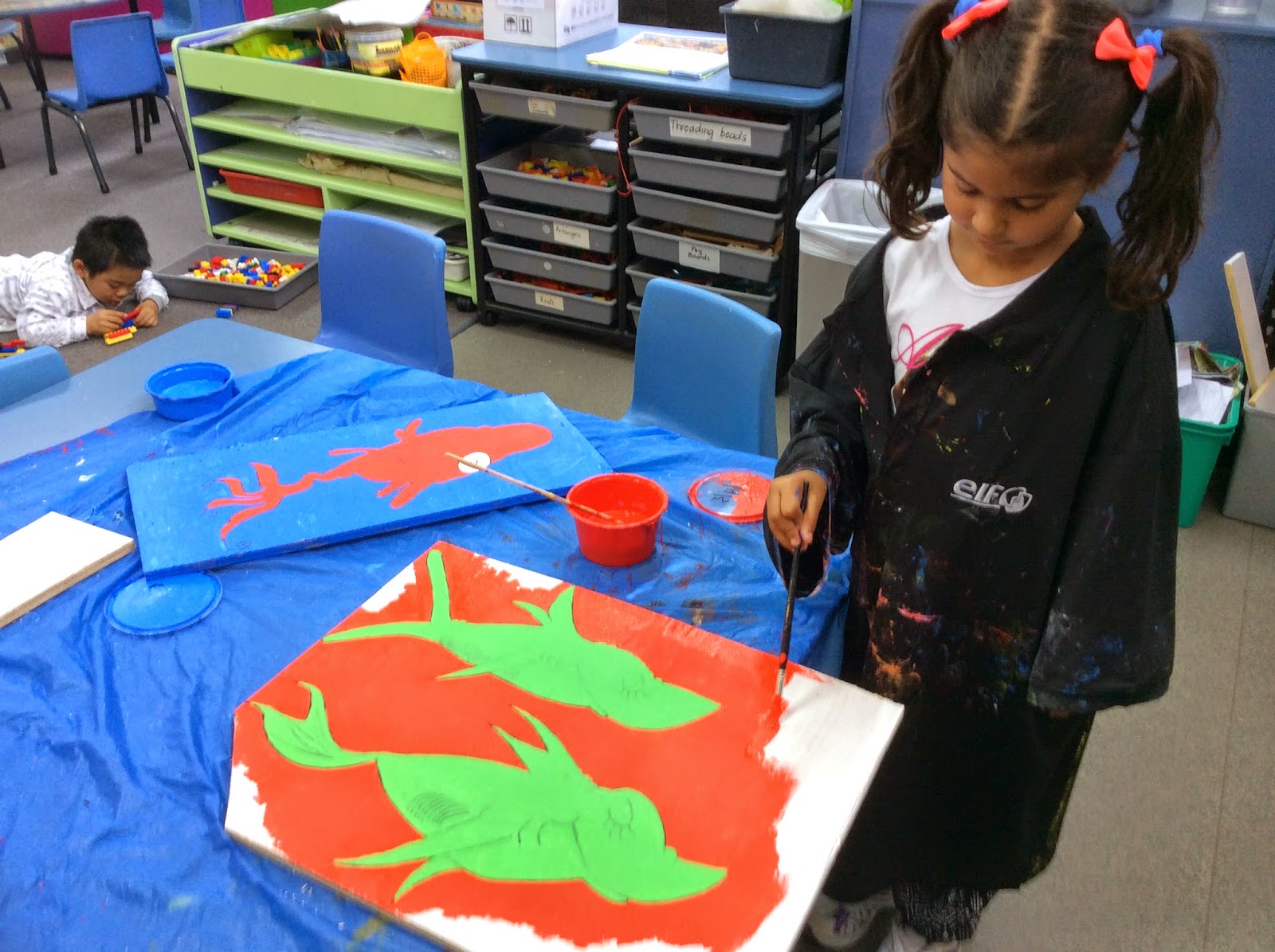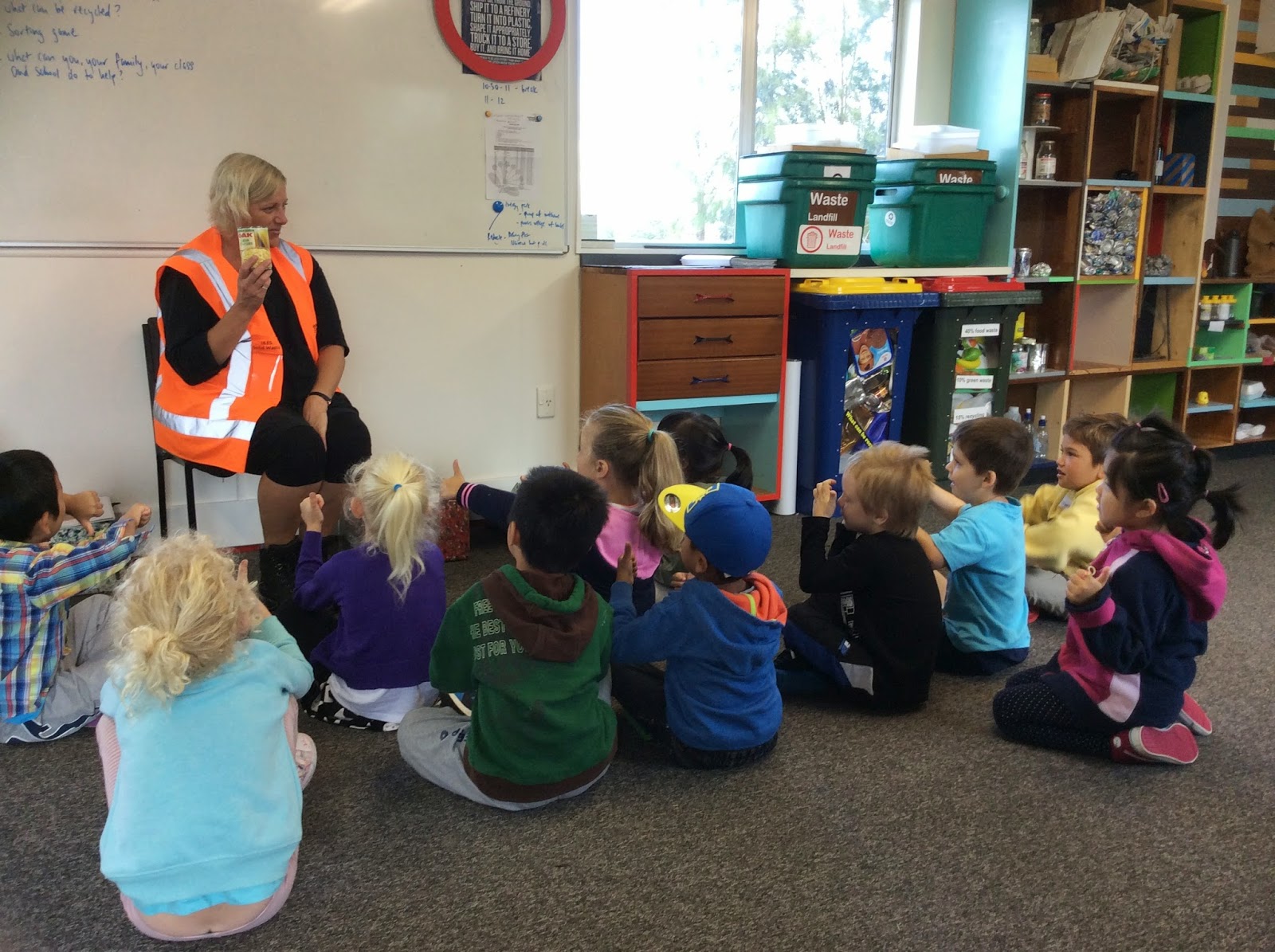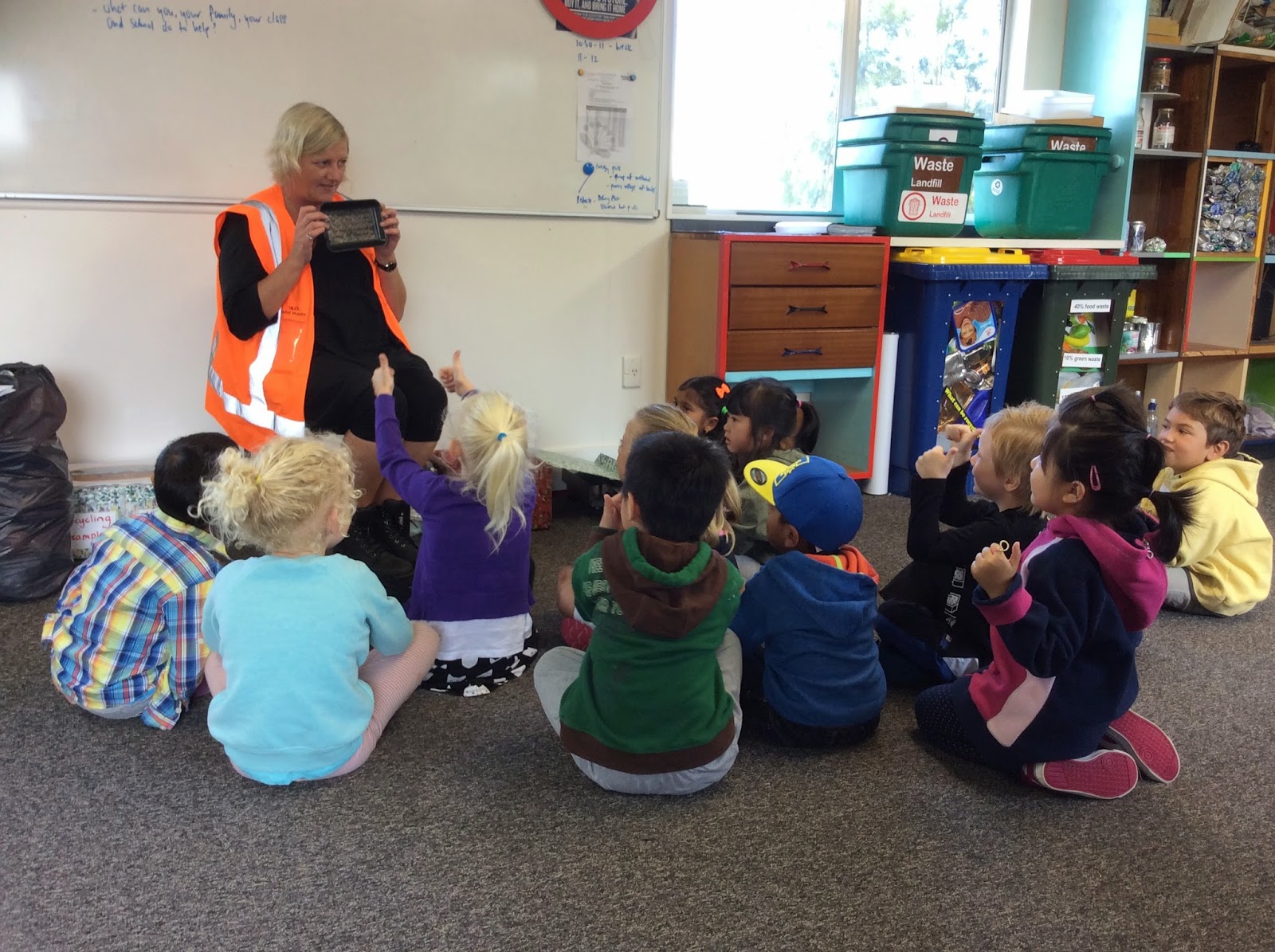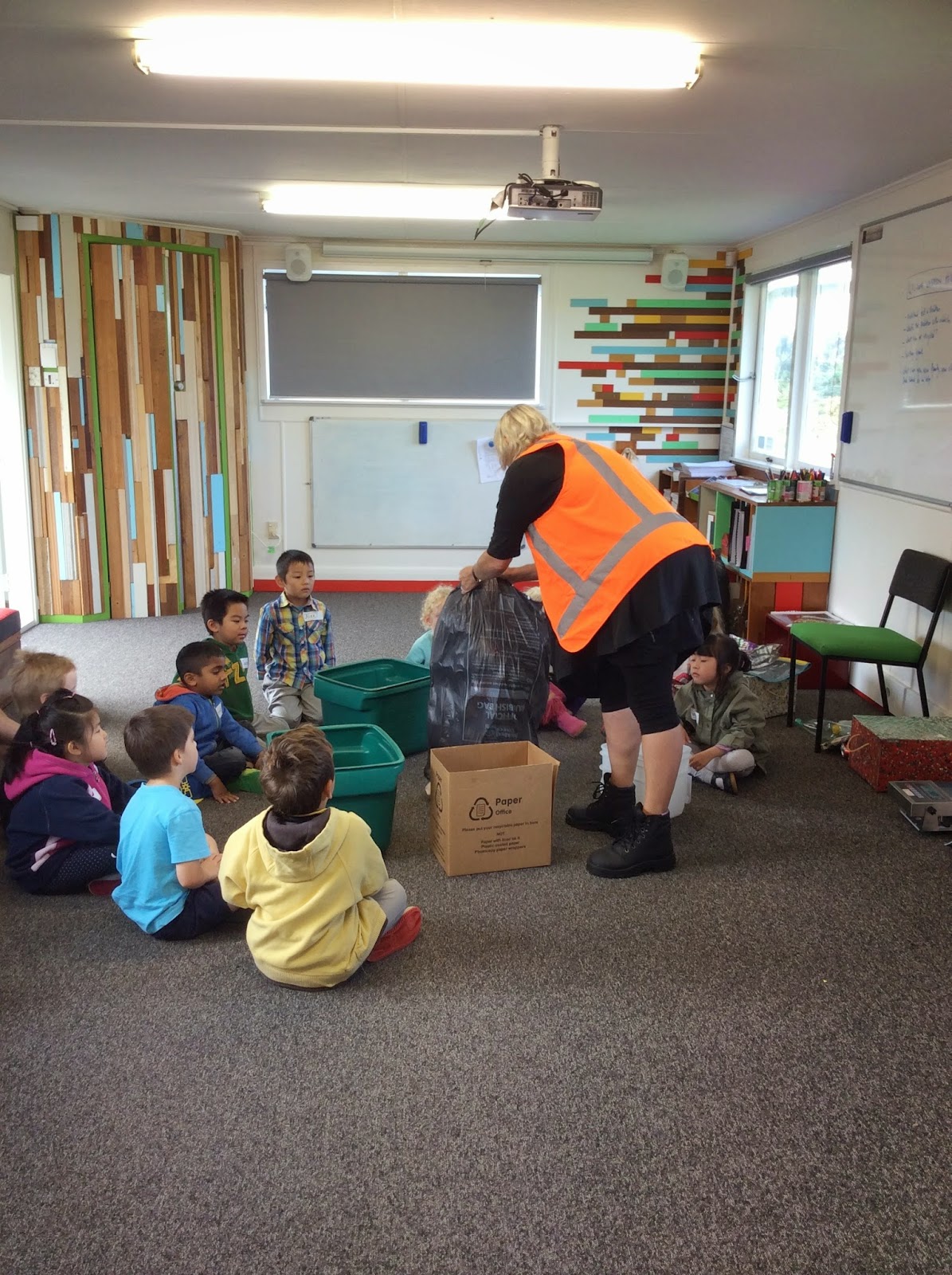Today we made hot cross buns with Room 4! We got to see how bread is made from yeast and flour. We thought that the yeast smelled quite strong and interesting!
We watched yeast activate in water and sugar..... We shared with a buddy about what foods we make at home with our families-a fantastic variety of lots of delicious kinds of foods!
It got frothy very quickly and so we added flour, cinnamon, mixed spice, salt, sultanas, peel, egg and butter.....
We kneaded a dough, then watched it GROW!
When the dough was ready, we rolled out little buns of our own, and then we put them on a tray for Mrs T to bake for a while in the oven....
When they had baked for a while, Mrs T took them out of the oven and then we piped on a cross on top with flour, baking powder, and water... Then Mrs Taylor baked them again, and then we got to eat them! They were so yummy! We wrote about making them in our writing books, and we sounded out the words we wanted to write really well! Look in our poem books this week for our bunny, chocolate egg, and hot cross bun poems and songs!
Rm 5 - Dana Taylor - danat@westernheights.school.nz

Tuesday, 31 March 2015
Thursday, 26 March 2015
Enviroweek continues!
Today we got to paint some Dr Suess characters that will beautify our walls outside Rooms 4 and Room 5.
Mrs Taylor sketched the fish and then painted the outlines, and we filled in the insides of the fish. We painted the backgrounds with Mrs Taylor and Mrs D'Lima too. We worked very carefully and very slowly! It was fun!
Next week we will do another coat on the yellow poles outside our class, and paint our Cat in the Hat to go on the wall as well.
Mrs D'Lima's class have painted a beautiful bookshelf for outside of Room 5, and we painted the seats in Cat in the Hat colours outside our classrooms also!
Mrs Taylor sketched the fish and then painted the outlines, and we filled in the insides of the fish. We painted the backgrounds with Mrs Taylor and Mrs D'Lima too. We worked very carefully and very slowly! It was fun!
Next week we will do another coat on the yellow poles outside our class, and paint our Cat in the Hat to go on the wall as well.
Mrs D'Lima's class have painted a beautiful bookshelf for outside of Room 5, and we painted the seats in Cat in the Hat colours outside our classrooms also!
Room 5 visited the Waitakere Waste Transfer Station
On Tuesday we visited the Waste Transfer Station to learn about how we can lesson the rubbish we generate......
Sarah showed us some old paper that had been found in a land fill. Sarah explained that anything that is put into the landfill does not break down- nothing happens to it....... This piece of paper is 30 years old and looks almost like new.
We learned that glass is made from sand, that the iron in sands can be used to make tin cans, and that we mine and extract aluminium powders to make aluminium cans. We can recycle cans, bottles, and aluminium cans to make more...
Here are some examples of litter free lunchboxes. We can use less packaging and make less rubbish.
We played a thumbs up or thumbs down game to guess which items could be recycled. We guessed that plastic bottles can be recycled. Plastic can only be recycled a certain number of times, so it is better that we use a good drink bottle instead of buying lots of plastic ones each day.
We learned that things that sound crinkly or scrunchy generally cannot be recycled, like crinkly wrappers....These would end up in the land fill because they cannot be recycled.
We saw plastic meat trays and shared what we knew about them- we said they were used for chicken, steak, and meat. Sarah said that these particular trays can be recycled, so are a better choice than the polystyrene trays.
We all said that we can recycle paper and cardboard and make it into more paper and cardboard and egg cartons and even toilet paper!
We put our thumbs down for plastic bags because they sounded crinkly and cannot be recycled. We want to use more reusable bags.
Sarah showed us that we need to wrap up sharp objects or broken cups and plates before we put them in the rubbish because someone at the Transfer station or the rubbish collectors could get hurt if sharp pieces are sticking out of the bag.
We came up with ways that we could reuse this t-shirt- rags, dolls clothes, art shirts....
Sarah showed us how some things have been made into other things to use them again- like this plastic bag handbag!
This is an apron made out of a horse feed bag!
This is a reusable shopping bag made out of lots of little juice cartons!
Sarah showed us a recyclables container....
a foodscraps container....
a box for paper and cardboard recycling.....
Sarah showed us a full rubbish bag....
She tipped it out and then we started to separate the rubbish into the different ways that it could be recycled.
Sarah showed us a tetra pack- this cannot be recycled in New Zealand, so these go into the landfill.
Look at how much smaller the rubbish bag is now!! We are sending much much less rubbish into the landfill and that is great!
Sarah and her husband Pete have decorated the learning centre with things that have been brought into the Transfer Station! They have used crutches and golf club handles as fence poles!
We rode a bike in that is connected to a water fountain. We used the water to water the garden.
Look at us in our hard hats and high visibility vests! We had to wear these while we walked to the wood and green waste pile to keep us safe.
People can come and get free wood from the Transfer Station!
There is a big green waste pile! It gets made into mulch or compost. We could make our own at home with our green waste....
Sarah and Pete are making a cow out of recycling bins!
Can you see the head?
This is where hazardous and dangerous chemicals are brought like paint..... People can come and get free paint on Tuesdays and Wednesdays from 1-3 pm. That means that it can be used instead of wasted and dried out in layers to go into the landfill.
This area is usually full of rubbish!
Here are some of the things that can be purchased and used again. There is a shop in the Transfer Station to buy things like used lawnmowers and even bikes!
Can you see the people sorting the plastics?
This truck takes away landfill rubbish over and over every day...
Sarah showed us a worm farm when we went back to the Learning Centre! Worms are great at eating up our food scraps and creating vermicast and good soil for us to grow veggies and plants!
These are tiger worms that are the fastest worms at eating up scraps... They can be ordered from Australia.
We all got to have a look at the worms by carefully picking them up with small twigs. We could not touch them with our hands otherwise we would burn their skin.
We got to look up close at them with magnifying glasses. We could see their segments, and tried to find their mouths! Worms have 5 hearts and no lungs!
This is a close up of a worm's mouth!
Look at the neat artwork built into the garden! We had such an interesting trip today!
Sarah showed us some old paper that had been found in a land fill. Sarah explained that anything that is put into the landfill does not break down- nothing happens to it....... This piece of paper is 30 years old and looks almost like new.
We learned that glass is made from sand, that the iron in sands can be used to make tin cans, and that we mine and extract aluminium powders to make aluminium cans. We can recycle cans, bottles, and aluminium cans to make more...
Here are some examples of litter free lunchboxes. We can use less packaging and make less rubbish.
We played a thumbs up or thumbs down game to guess which items could be recycled. We guessed that plastic bottles can be recycled. Plastic can only be recycled a certain number of times, so it is better that we use a good drink bottle instead of buying lots of plastic ones each day.
We learned that things that sound crinkly or scrunchy generally cannot be recycled, like crinkly wrappers....These would end up in the land fill because they cannot be recycled.
We saw plastic meat trays and shared what we knew about them- we said they were used for chicken, steak, and meat. Sarah said that these particular trays can be recycled, so are a better choice than the polystyrene trays.
We all said that we can recycle paper and cardboard and make it into more paper and cardboard and egg cartons and even toilet paper!
We put our thumbs down for plastic bags because they sounded crinkly and cannot be recycled. We want to use more reusable bags.
Sarah showed us that we need to wrap up sharp objects or broken cups and plates before we put them in the rubbish because someone at the Transfer station or the rubbish collectors could get hurt if sharp pieces are sticking out of the bag.
We came up with ways that we could reuse this t-shirt- rags, dolls clothes, art shirts....
Sarah showed us how some things have been made into other things to use them again- like this plastic bag handbag!
This is an apron made out of a horse feed bag!
This is a reusable shopping bag made out of lots of little juice cartons!
Sarah showed us a recyclables container....
a foodscraps container....
a box for paper and cardboard recycling.....
Sarah showed us a full rubbish bag....
She tipped it out and then we started to separate the rubbish into the different ways that it could be recycled.
Sarah showed us a tetra pack- this cannot be recycled in New Zealand, so these go into the landfill.
Look at how much smaller the rubbish bag is now!! We are sending much much less rubbish into the landfill and that is great!
Sarah and her husband Pete have decorated the learning centre with things that have been brought into the Transfer Station! They have used crutches and golf club handles as fence poles!
We rode a bike in that is connected to a water fountain. We used the water to water the garden.
Look at us in our hard hats and high visibility vests! We had to wear these while we walked to the wood and green waste pile to keep us safe.
People can come and get free wood from the Transfer Station!
There is a big green waste pile! It gets made into mulch or compost. We could make our own at home with our green waste....
Sarah and Pete are making a cow out of recycling bins!
Can you see the head?
This is where hazardous and dangerous chemicals are brought like paint..... People can come and get free paint on Tuesdays and Wednesdays from 1-3 pm. That means that it can be used instead of wasted and dried out in layers to go into the landfill.
This area is usually full of rubbish!
Here are some of the things that can be purchased and used again. There is a shop in the Transfer Station to buy things like used lawnmowers and even bikes!
Can you see the people sorting the plastics?
This truck takes away landfill rubbish over and over every day...
Sarah showed us a worm farm when we went back to the Learning Centre! Worms are great at eating up our food scraps and creating vermicast and good soil for us to grow veggies and plants!
These are tiger worms that are the fastest worms at eating up scraps... They can be ordered from Australia.
We all got to have a look at the worms by carefully picking them up with small twigs. We could not touch them with our hands otherwise we would burn their skin.
We got to look up close at them with magnifying glasses. We could see their segments, and tried to find their mouths! Worms have 5 hearts and no lungs!
This is a close up of a worm's mouth!
Look at the neat artwork built into the garden! We had such an interesting trip today!
Subscribe to:
Comments (Atom)











































































































































